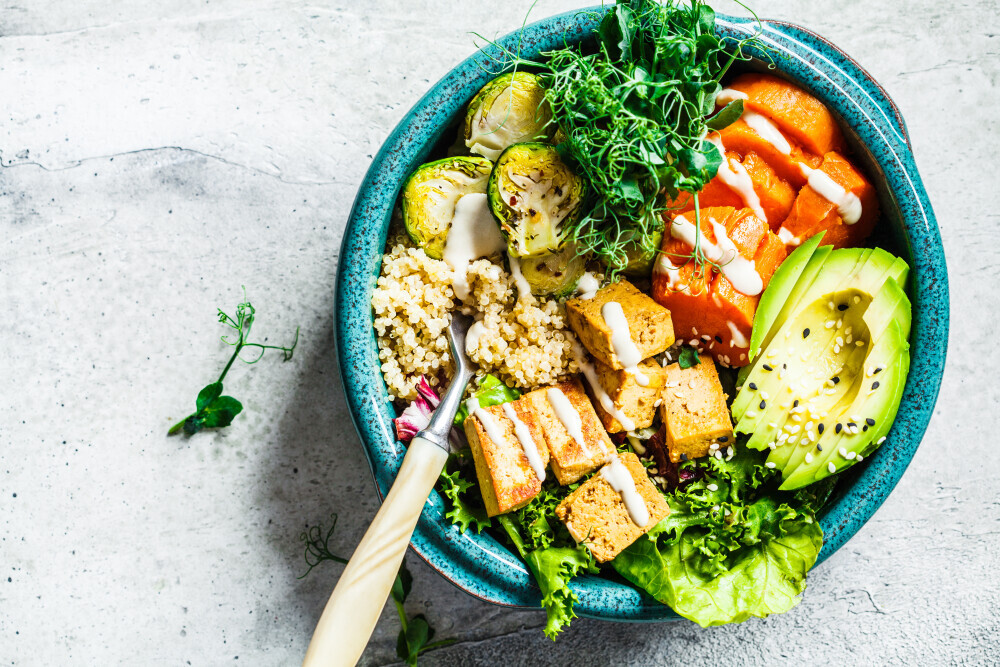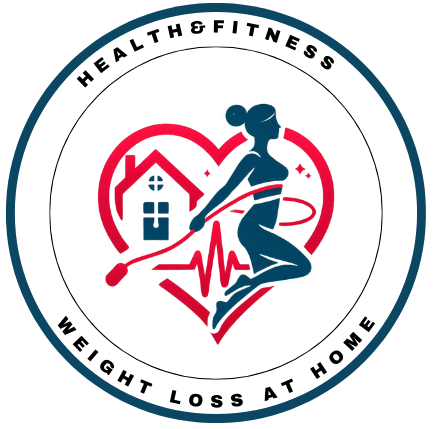
Extreme weight loss diet plans get a lot of attention, mostly because they promise dramatic results in a short time. For people who want to transform their bodies quickly, these diets can look pretty tempting. Before jumping in, it’s important to know not just how they work, but also what they mean for your health and how to approach them safely.
I’m here to break down everything I’ve learned about these diets, how to meal prep for weight loss, what works, what definitely doesn’t, and how you can set yourself up for better results.
What Are Extreme Weight Loss Diet Plans?
Extreme weight loss plans are designed to work faster than standard healthy eating approaches. They usually focus on cutting calories to a pretty low level; sometimes well under 1,200 calories per day, and often restrict or eliminate whole groups of foods (like carbs or fats). Popular types include verylowcalorie diets (VLCDs), juice cleanses, keto or carnivore diets, and some commercial diet programs that promise huge results in just a few weeks.
The basic goal is to burn more energy than you take in, so your body uses stored fat as fuel. That said, these diets aren’t just hard to stick with. They can also shake up your metabolism, energy levels, and mood. For some folks, these plans can feel like the only option after years of frustration, but there’s a lot to consider when deciding if they’re right for you.
How Extreme Diets Work and What to Expect
When you enter a big calorie deficit, your body pulls from fat stores to get the fuel it’s missing. You might see the number on the scale drop fast during the first week or two; mostly because you’re losing water weight along with some initial fat. After that, real fat loss happens, but progress often slows as your body adapts.
Lowcarb diets like keto cause your body to enter “ketosis,” where it burns fat for fuel instead of carbs. Juice cleanses, on the other hand, mostly flush water out of your system and can also lower muscle mass if you’re not careful. Some people report more energy, less bloating, and even mental clarity at first. But side effects like headaches, fatigue, and mood swings are also really common during those first few days. Careful monitoring and listening to your body makes a big difference.
How to Meal Prep for Weight Loss: Meal Ideas and Recipes
Meal prepping isn’t just for athletes and bodybuilders. I’ve found it’s a super useful way to save time, stay on track, and keep unhealthy foods out of your way. Choosing what to eat in advance makes it a lot easier to stick with those goals, especially when you’re busy or hungry MOM.
Here’s how I approach meal prep for weight loss, along with some meal ideas that keep things interesting:
- Pick a Prep Day: I usually set aside Sundays or whatever day I have free. This is when I chop, cook, and portion out food for the next few days.
- Prep Simple Proteins: Grilled chicken, baked fish, or hardboiled eggs store well in the fridge. Lentils, beans, or tofu work great if you want plantbased options.
- Load Up on Veggies: Roasted broccoli, zucchini, bell peppers, or leafy greens are my go-tos. You can prep them in bulk and add them to any dish.
- Whole Grains in Small Batches: Brown rice, quinoa, or barley are easy to measure and pack plenty of fiber to keep you full.
- Portion Out Healthy Snacks: Sliced cucumbers, baby carrots, apple slices, or a handful of nuts help when cravings hit between meals.
Meal Recipe Example: Protein Packed Buddha Bowl
Combine a scoop of brown rice, roasted chickpeas, mixed greens, chopped tomatoes, grilled chicken or tofu, and drizzle with a simple olive oil lemon dressing. Super tasty, filling, and covers all your nutrition bases.
YouTube Link How to make it from Tasty: https://www.youtube.com/watch?v=eDVXZaD_0OU

How to Plan an Extreme Weight Loss Diet for Results (And Still Stay Safe)
Careful planning makes a world of difference with extreme diets. Jumping in without a roadmap or a backup plan, usually ends with burnout and disappointment. Here are the key things I keep in mind when setting up any meal plan for major weight loss:
- Set Realistic Goals: Dropping 10+ pounds in a week sounds great, but slower weight loss is more sustainable and much kinder to your body. Aim for 1 to 2 pounds per week if you want results that last.
- Prioritize Protein: Every meal needs a solid protein source. This helps protect muscle while you lose fat and keeps you feeling satisfied. Think grilled chicken, turkey, eggs, Greek yogurt, tofu, or beans.
- Don’t Skip Healthy Fats: Avocados, nuts, seeds, and olive oil are all your friends in moderation.
- Veggies for Bulk: Lowcalorie vegetables let you eat bigger portions so you don’t feel deprived.
- Pick “Smart” Carbs: Swap out refined grains for whole grains, sweet potatoes, and fruit. These keep your energy up without the sugar crashes.
- Track Progress (But Not Obsessively): Weighing in once a week is usually enough. Check how your clothes fit and notice changes in energy, too.
Helpful Tips for Sticking With Your Plan
- Be Flexible: If you have to eat out or stray from your plan, do the best you can and move on. Skipping meals or trying to “make up” by going hungry often backfires.
- Hydrate Like Crazy: Water fills you up and keeps your digestion moving, especially when fiber intake goes up. I aim for at least eight big glasses a day.
- Log Your Meals (If You Want): Apps like MyFitnessPal or Cronometer can help you spot weak spots or hidden sources of calories, but don’t drive yourself nuts with tracking if it stresses you out.
- Plan Indulgences: Giving yourself a treat once in a while prevents bingeing later.
- Don’t Go Solo: Finding a buddy or online community can keep you motivated when the going gets tough.
What to Avoid With Extreme Diets
While a dramatic reset can feel motivating, extreme diets come with some big risks. Here are things I always watch out for:
- Starving Yourself: Dropping calories too low causes muscle loss, fatigue, dizziness, and slows your metabolism. If you’re always exhausted or thinking about food, your plan is probably too strict.
- Cutting Out Whole Food Groups Fast: Ditching all carbs or fats overnight can make you feel lousy and might lead to deficiencies in the long run.
- Ignoring Medical Conditions: Anyone with diabetes, heart issues, thyroid disorders, or a history of eating disorders should get a doctor’s input first.
- Overdoing Cardio: Pairing extreme diets with tons of exercise leaves you open to injury and burnout. Focus on steady, moderate movement instead.
- Falling for “Miracle” Claims: Anything promising overnight results with a single supplement or product is usually a sales pitch, not a solution. Stick to sciencebacked advice when making decisions about your health.
Side Effects of Extreme Diet Plans
Common problems I hear about (and have sometimes experienced myself) include headaches, irritability, hair loss, irregular periods, and muscle cramps. Staying in touch with your body; noticing when something feels off lets you make changes before things get worse.
FAQ
Q: Are extreme weight loss diets safe?
A: These diets aren’t for everyone. Medical supervision is super important with verylowcalorie diets, especially if you have existing health conditions. For most people, a balanced approach gets better longterm results with fewer risks.
Q: Can I do an extreme weight loss plan without tracking calories?
A: Tracking helps, but focusing on whole foods, watching your portions, and listening to your hunger usually leads to good results without heavy tracking.
Q: How fast will I see results?
A: Initial weight drops quickly; often just water weight, but real fat loss takes more time. Slow and steady wins the race for both results and keeping weight off.
Q: Do I need supplements?
A: Some diets might call for a multivitamin or minerals (like magnesium or potassium). It’s always best to talk to a doctor or a registered dietitian before adding anything new.
Q: Can I exercise on an extreme weight loss plan?
A: Light to moderate activity is usually doable. Highintensity workouts may feel harder when calories are very low, so listen to your body and don’t push through fatigue.
Bottom Line
Extreme weight loss diets can bring fast results if you’ve hit a plateau or feel stuck, but they’re rarely sustainable without the right planning and safety checks. A better bet is to use meal prepping, smarter shopping, and thoughtful planning. These help create habits that last well after the diet ends.
Focus on balance, keep meals interesting, and remember that slower, steady progress makes the adventure a lot more enjoyable. If in doubt, work with a health professional for advice, and trust your gut when something feels off. Your longterm health is worth it.
